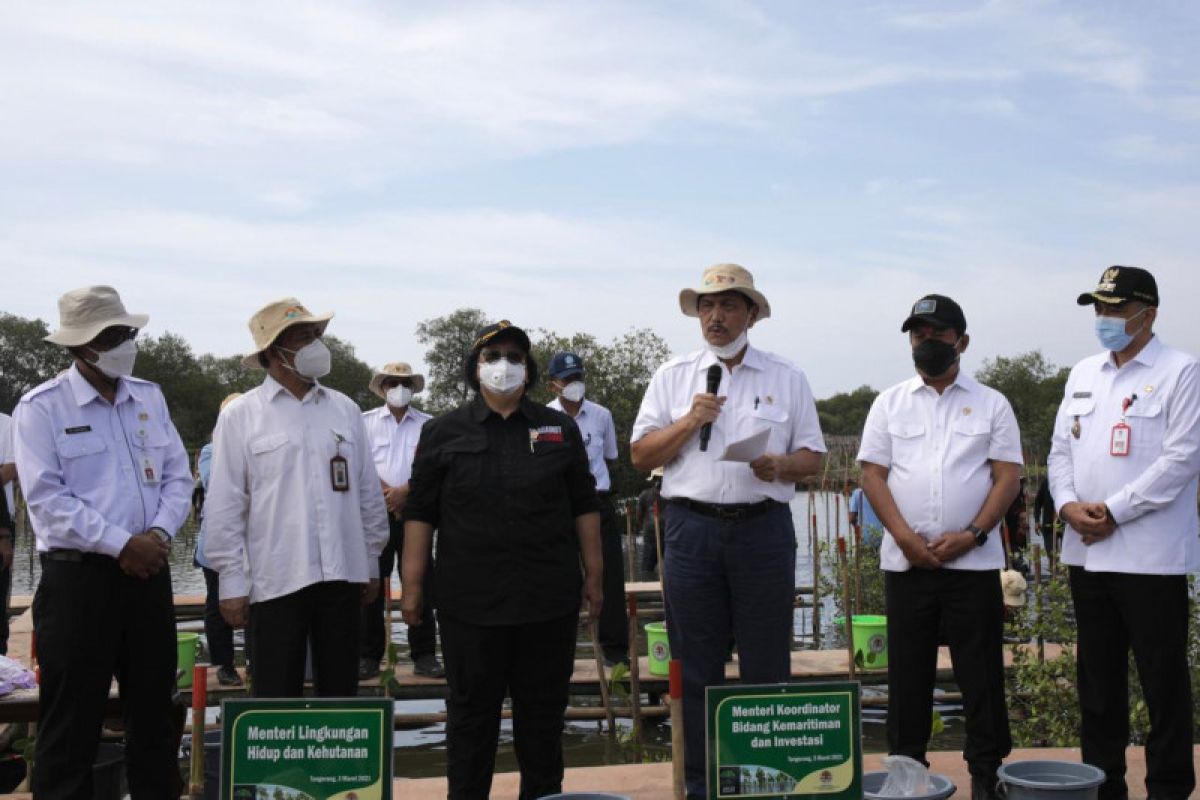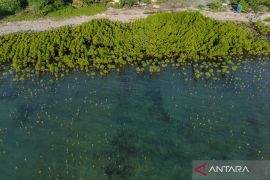The symbolic planting of mangrove trees shows that starting today, we must act swiftly to achieve the target of rehabilitating 150 thousand hectares of mangrove forests this year.Jakarta (ANTARA) - Coordinating Minister for Maritime Affairs and Investment, Luhut Binsar Pandjaitan, launched a national mangrove rehabilitation program with the plantation of mangrove trees in Tanjung Pasir village, Tangerang district, Banten province on Wednesday.
Minister of Environment and Forestry, Siti Nurbaya Bakar, Minister of Maritime Affairs and Fisheries, Sakti Wahyu Trenggono, Minister of Villages, Disadvantaged Regions and Transmigration, Abdul Halim Iskandar, Minister of Tourism and Creative Economy, Sandiaga Uno, Peatland and Mangrove Restoration Agency chief Hartono, and Banten Governor Wahidin Halim attended the event.
"The symbolic planting of mangrove trees shows that starting today, we must act swiftly to achieve the target of rehabilitating 150 thousand hectares of mangrove forests this year,” Pandjaitan said in a written statement released on Wednesday.
Mangrove forests currently cover an area of 3.31 million hectares in the country and account for 20 percent of the world's mangrove forests. Unfortunately, 600 thousand hectares of the 3.31 million hectares of Indonesian mangrove forests are in a critical condition, the minister noted.
Related news: Jokowi installs new chief of Peatland and Mangrove Restoration Agency
This has prompted the government to set itself the target of rehabilitating 150 thousand hectares of mangrove forests per year in the next four years, he said.
The program is claimed to be the largest in the world.
Pandjaitan said mangroves provide many benefits to the Indonesian community, such as protecting the country from the impact of climate change. Mangroves can also act as barriers to large waves caused by strong winds and tsunamis, he added.
Mangroves also have the potential to store carbon in large quantities and can be traded, he pointed out.
Indonesia’s forests, including mangrove forests, can store carbon, and account for nearly 75 percent of the carbon stored globally on average, and this can be traded to raise state revenues if the mangroves are well-managed, he explained.
In addition, mangrove forests can be developed as tourism destinations and mangrove products can be processed for consumption or sale, thereby adding to the people's income, he added.
Related news: Preserving Indonesia's mangroves crucial for climate change mitigation
Translator: Ade irma Junida/Suharto
Editor: Rahmad Nasution
Copyright © ANTARA 2021











